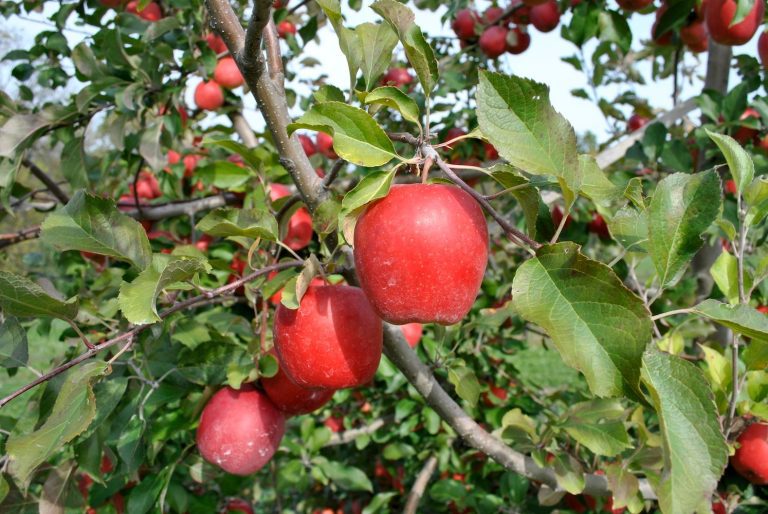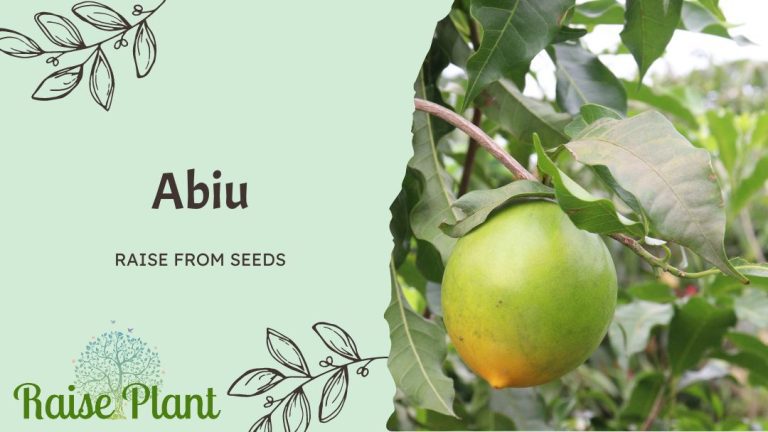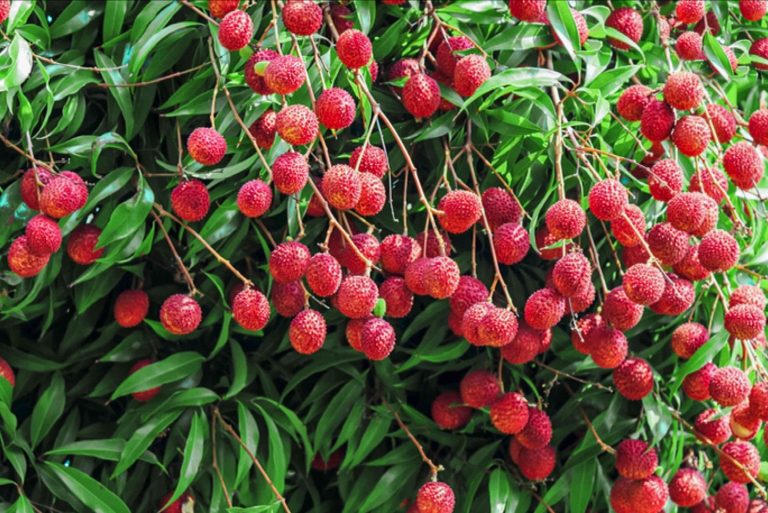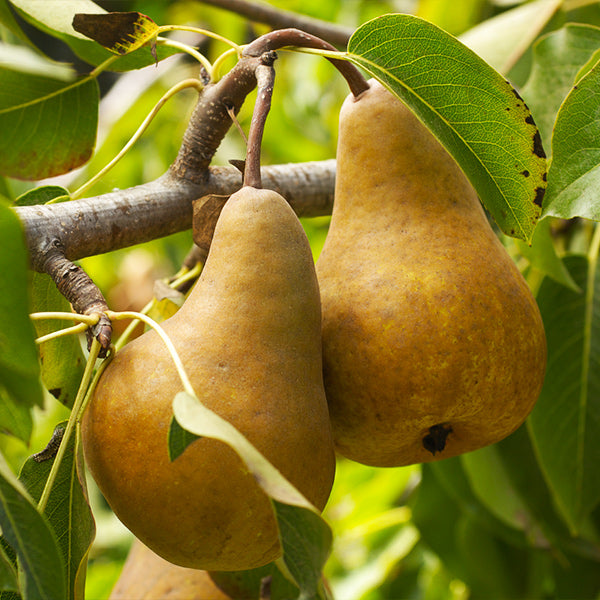Grow Indian Gooseberry from Seeds: A Step-by-Step Guide
To grow indian gooseberry from seeds, soak the seeds in water for 24 hours and then sow them in well-drained soil. Provide regular watering and sunlight to promote healthy growth.
Indian gooseberry, also known as amla, is a highly nutritious and medicinal fruit that is native to india. It is packed with essential vitamins, minerals, and antioxidants that offer numerous health benefits. While it is commonly propagated through cuttings, growing indian gooseberry from seeds can be a rewarding experience.
This article will guide you on how to successfully grow indian gooseberry from seeds. By following a few simple steps, you can cultivate your own amla tree and enjoy the fresh and tangy fruits it produces. So, let’s delve into the process of growing indian gooseberry from seeds and watch your amla tree flourish in no time.
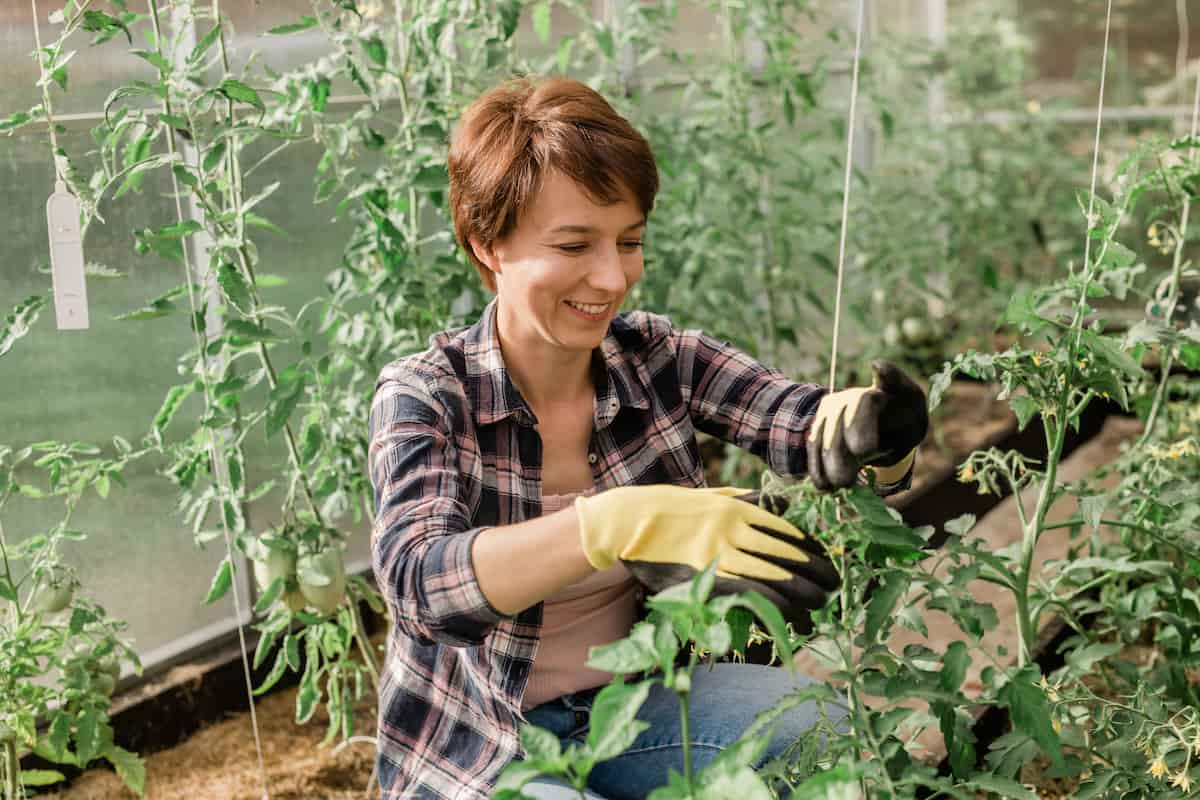
Credit: agriculturalmagazine.com
Sourcing Healthy Indian Gooseberry Seeds
Discover the ideal source for obtaining healthy indian gooseberry seeds, allowing you to effortlessly grow your own vibrant plants from scratch. Enjoy the benefits of this nutrient-rich fruit by starting the cultivation process with authentic and top-quality seeds.
Indian gooseberry, also known as amla, is a highly valued fruit for its health benefits and culinary uses. If you’re interested in growing this versatile plant from seeds, sourcing high-quality seeds is crucial for a successful cultivation journey. By choosing healthy indian gooseberry seeds, you can ensure the viability and freshness of your plants.
In this section, we will explore the importance of selecting high-quality seeds, provide tips for sourcing seeds from reputable suppliers, and guide you on how to check seeds for viability and freshness.
Importance Of Choosing High-Quality Seeds
It’s essential to choose high-quality indian gooseberry seeds to ensure the best chances of germination and healthy plant growth. Here’s why it matters:
- Higher germination rate: High-quality seeds have a higher probability of germinating successfully. This means more of your seeds will sprout into healthy plants, giving you a better harvest.
- Disease resistance: Healthy seeds are less likely to carry diseases that can harm your plants. By selecting high-quality seeds, you reduce the chances of your indian gooseberry plants falling prey to common ailments.
- Vibrant plant growth: Good quality seeds usually produce robust and vibrant plants. These plants are more likely to thrive and produce abundant and flavorful indian gooseberries.
Tips For Sourcing Seeds From Reputable Suppliers
When sourcing indian gooseberry seeds, it’s important to find reputable suppliers who offer reliable, high-quality seeds. Consider the following tips:
- Research suppliers: Take the time to research and identify reputable suppliers known for providing quality seeds. Look for reliable online stores, local nurseries, or reputable gardening associations that can recommend trustworthy sources.
- Check customer reviews: Read customer reviews and testimonials about the supplier to gain insights into their reputation and the quality of their seeds. Positive reviews can be a good indication of reliability.
- Seek recommendations: Ask experienced gardeners or horticulturists for recommendations on trusted suppliers. They may have valuable insights and suggestions based on their own experiences.
- Look for certifications: Choose suppliers who carry certifications or affiliations with recognized gardening or agricultural organizations. These certifications often indicate their commitment to quality and good agricultural practices.
Checking Seeds For Viability And Freshness
Once you have your indian gooseberry seeds in hand, it’s essential to ensure they are viable and fresh. Follow these steps to check their quality:
- Perform a visual inspection: Examine the seeds for any signs of physical damage or decay. Healthy seeds are usually plump, firm, and free from cracks or discoloration.
- Conduct a germination test: Take a few seeds and perform a simple germination test before planting them all. Place the seeds on a damp paper towel and keep them in a warm and dark location. After a week, check for germination. Healthy seeds should show signs of sprouting.
- Consider the floatation test: Fill a bowl with water and put the seeds in it. Healthy seeds usually sink, while non-viable or damaged seeds may float. Discard any seeds that fail the floatation test.
- Assess the seed freshness: Fresh seeds are more likely to germinate successfully. Check the packet or supplier information for the seed’s harvest date or expiration date. The fresher the seeds, the better the germination rate.
By following these guidelines, you can ensure that you source healthy indian gooseberry seeds, setting a solid foundation for a successful and fruitful cultivation journey. Remember that choosing high-quality seeds and verifying their viability and freshness significantly increase your chances of growing strong and vibrant indian gooseberry plants.
Providing The Perfect Environment For Seed Germination
Create the ideal conditions to grow indian gooseberry from seeds and ensure successful germination. Follow expert tips for providing the perfect environment and nurturing your seedlings.
Understanding The Climatic Requirements Of Indian Gooseberry
Indian gooseberry, also known as amla, is a fruit that thrives in specific climatic conditions. Before you start growing indian gooseberry from seeds, it is important to understand its climatic requirements. Here are the key factors you need to consider:
- Temperature: Indian gooseberry prefers a warm temperate climate. The ideal temperature range for its growth is between 77°f and 95°f (25°c – 35°c). It can tolerate higher temperatures, but extreme heat can negatively affect its development.
- Sunlight: Adequate sunlight is crucial for the healthy growth of indian gooseberry plants. It thrives in full sun, requiring at least 6-8 hours of direct sunlight every day. Insufficient sunlight may result in weak and stunted plants.
- Humidity: Indian gooseberry prefers moderate to high humidity levels. It can tolerate humidity up to 70%, but excessive moisture can lead to fungal diseases. Proper ventilation and air circulation are essential in humid conditions.
Selecting The Right Location For Planting
Choosing the right location for planting indian gooseberry seeds is vital for their successful germination and growth. Consider the following factors when deciding on a suitable spot:
- Sun exposure: Indian gooseberry needs ample sunlight, so select a location that receives direct sun for several hours a day. Avoid shaded or poorly lit areas.
- Protection from frost: Indian gooseberry is susceptible to frost damage. If you live in an area prone to frost, choose a location that offers natural protection, such as near a building or under tree cover.
- Wind protection: Strong winds can damage young seedlings and hinder their growth. Plant indian gooseberry in a location that is sheltered from strong winds. If necessary, consider using windbreaks to shield the plants.
Soil Preparation And Nutrient Requirements
Proper soil preparation and providing the necessary nutrients are crucial for healthy seed germination and growth of indian gooseberry. Follow these guidelines for optimum results:
- Soil type: Indian gooseberry prefers well-draining soil that is rich in organic matter. Sandy loam or loamy soil is ideal. Avoid heavy clay soils as they can lead to waterlogging and root rot.
- Ph level: The optimum soil ph range for indian gooseberry is slightly acidic to neutral, between 5.5 and 7.5. Conduct a soil test and amend the ph if necessary using organic compost or agricultural lime.
- Nutrient requirements: Indian gooseberry requires balanced nutrition for robust growth. Prior to planting, incorporate well-composted organic matter into the soil to improve its fertility. Additionally, apply a complete fertilizer, such as a 10-10-10 npk formula, following the manufacturer’s instructions.
Proper Drainage And Watering Techniques
Providing proper drainage and watering is essential for the successful germination and growth of indian gooseberry plants. Follow these techniques to ensure optimal conditions:
- Drainage: Indian gooseberry does not tolerate waterlogged soil. Ensure that the planting area has good drainage to prevent water accumulation. If the soil is heavy or poorly drained, consider raising the planting area or implementing drainage measures.
- Watering: Water newly sown indian gooseberry seeds gently and evenly. Once the seedlings emerge, water them regularly but avoid overwatering, as it can lead to root rot. Maintain moist but not saturated soil conditions. Monitor the moisture levels and adjust watering accordingly, considering the climate and rainfall patterns.
Remember to provide the perfect environment for seed germination by understanding the climatic requirements of indian gooseberry, selecting the right location, preparing the soil, and ensuring proper drainage and watering techniques. By following these guidelines, you can set the stage for healthy and vigorous indian gooseberry plants that will yield a bountiful harvest.
From Planting To Harvesting, A Comprehensive Journey
Embark on a comprehensive journey of growing indian gooseberry from seeds, from planting to harvesting, and discover the rewards of cultivating this versatile and beneficial fruit. With simple steps and expert tips, you can bring the wonder of indian gooseberry into your own garden.
Soaking And Scarifying The Seeds For Better Germination
- Soak the indian gooseberry seeds overnight in warm water to soften their hard outer shell.
- After soaking, scarify the seeds by gently rubbing them with sandpaper or using a small file.
- Scarifying helps break the seed coat and promotes germination.
- Ensure that each seed is scarified enough to expose the inner layer without causing damage.
- Properly scarified seeds have higher chances of germinating successfully.
Starting The Seeds Indoors Or In A Greenhouse
- Start the indian gooseberry seeds indoors or in a greenhouse about six to eight weeks before the last expected frost.
- Use seed-starting trays or small pots filled with well-draining seed-starting mix.
- Sow the scarified seeds about half an inch deep in the soil.
- Place the trays or pots in a warm location with indirect sunlight.
- Maintain a consistent temperature of around 70-80°f (21-27°c) for optimal germination.
Transplanting Seedlings Into Containers Or Garden Beds
- Once the indian gooseberry seedlings have developed two or more sets of true leaves, they are ready to be transplanted.
- Choose a sunny spot in your garden with well-draining soil for optimum growth.
- Dig holes in the garden bed or prepare containers with a depth and width of at least 12 inches (30 cm).
- Gently remove the seedlings from the trays or pots, being careful not to damage the roots.
- Place the seedlings in the holes or containers, ensuring that the top of the root ball is level with the soil surface.
- Backfill the holes or containers with soil, firming it gently around the seedlings.
Implementing Proper Care And Maintenance Practices
- Indian gooseberry plants require full sun exposure for at least 6-8 hours a day.
- Ensure that the soil is consistently moist but not waterlogged.
- Regularly weed the planting area and remove any competing vegetation.
- Apply a layer of organic mulch around the base of the plants to suppress weeds and retain moisture.
- Monitor for any signs of nutrient deficiencies or disease and take appropriate measures to address them promptly.
Watering, Mulching, And Fertilizing Guidelines
- Water the indian gooseberry plants regularly, providing enough water to keep the soil consistently moist but not soggy.
- Avoid overwatering as it can lead to root rot and other diseases.
- Apply a layer of organic mulch around the plants to retain soil moisture and regulate temperature.
- Use well-rotted organic compost or balanced slow-release fertilizer during the growing season to provide necessary nutrients.
- Follow the recommended application rates and timing as per the product instructions.
Pruning And Training Methods For Healthy Growth
- Pruning indian gooseberry plants is essential for maintaining their shape, promoting airflow, and reducing disease incidence.
- Prune during the dormant season, removing any dead, damaged, or crossing branches.
- Maintain an open center or vase-shaped structure to allow sunlight to reach all parts of the plant.
- Train young branches by gently bending them and securing them with ties to encourage a more desirable growth pattern.
- Prune lightly each year to prevent excessive growth and maintain the desired shape and size.
Protecting Against Common Pests And Diseases
- Monitor indian gooseberry plants regularly for common pests such as aphids, mites, and fruit flies.
- Use organic insecticidal sprays or introduce beneficial insects like ladybugs to control pest populations.
- Ensure proper sanitation, removing fallen leaves, fruit, and debris to prevent disease spread.
- Watch for signs of fungal diseases such as leaf spot or powdery mildew.
- Apply appropriate disease control measures, such as fungicides, if necessary.
Monitoring Growth Stages And Adjusting Cultivation Techniques Accordingly
- Regularly observe the growth stages of indian gooseberry plants to ensure they meet the necessary requirements.
- Adjust watering, fertilizing, and pruning practices based on the plant’s growth and nutritional needs.
- Consider factors such as temperature, sunlight exposure, and soil conditions when making adjustments.
- Continuously monitor for any signs of stress, nutrient deficiencies, or pests and take proactive measures to address them promptly.
Harvesting And Enjoying The Fruits Of Your Labor
- Indian gooseberries typically ripen about six to eight months after planting.
- Harvest the fruits when they attain their full color and become slightly soft to the touch.
- Gently twist or cut the fruits from the tree, taking care not to damage the branches or remaining fruit.
- After harvesting, wash the fruits thoroughly and enjoy them fresh or use them in various culinary preparations.
- Store the harvested indian gooseberries in a cool, dry place for extended shelf life.
Now you have all the information needed to embark on a comprehensive journey of growing indian gooseberry from seeds. Follow these guidelines closely, and soon you’ll be rewarded with a bountiful harvest of delicious and nutritious fruits. Happy gardening!
Frequently Asked Questions On Grow Indian Gooseberry From Seeds
How Do You Germinate Indian Gooseberry Seeds?
To germinate indian gooseberry seeds, soak them in water for 24 hours. Plant the seeds in a pot filled with well-draining soil and cover them with a thin layer of soil. Keep the pot in a warm and sunny area, ensuring the soil is consistently moist.
Germination will typically take around 4-6 weeks. Once the seedlings appear, provide them with indirect sunlight and gradually increase their exposure to direct sunlight. Maintain regular watering and ensure the soil is always moist but not waterlogged. Transplant the seedlings to a bigger pot or to the garden once they have grown to a suitable size.
Remember to protect the seedlings from frost and strong winds. With care and patience, you can successfully germinate indian gooseberry seeds and grow healthy plants.
How Long Does It Take To Grow Gooseberries From Seed?
Gooseberries take around 2 to 3 years to grow from seed. The germination process usually takes 2 to 8 weeks. Once the seeds have sprouted, it takes about 1 to 2 years for the seedlings to grow into young plants and establish a strong root system.
During this time, proper care and maintenance, such as regular watering, fertilizing, and protecting the plants from pests and diseases, are essential for their growth. After the initial 2 to 3 years, the gooseberry plants will start bearing fruits. Harvesting can typically begin in the fourth year, and the plants will continue to produce fruits for many years to come.
Growing gooseberries from seed requires patience and attention, but the reward of fresh and delicious gooseberries is worth the wait.
Can I Grow Gooseberry From Seeds?
Yes, you can grow gooseberry from seeds. Sow the seeds in well-drained soil during the spring. Plant them 2 cm deep and keep the soil moist. Germination can take up to 30 days. As the seedlings grow, thin them out to provide enough space for them to develop.
Gooseberry plants usually produce fruit in 2-3 years. Remember to provide them with regular watering and proper sunlight. Prune the plants in winter to maintain shape and promote growth. With proper care, gooseberry plants grown from seeds can yield a good harvest of delicious fruits.
Enjoy growing your own gooseberries from seeds!
Can You Grow Amla In Usa?
Yes, amla can be grown in the usa. Amla, also known as indian gooseberry, is a hardy fruit tree that can withstand a range of climates. It is a deciduous tree that thrives in warm and tropical regions. In the usa, amla can be grown in the southern states, such as florida, texas, and california, where the weather conditions are suitable for its cultivation.
A well-draining soil and full sun exposure are essential for growing amla. It can be propagated from seeds or cuttings, and the tree takes about 3-4 years to start bearing fruits. Amla is highly valued for its medicinal properties and its fruit is rich in vitamin c and antioxidants.
It is used in traditional medicine and also finds culinary uses in chutneys, pickles, and jams.
Conclusion
Growing indian gooseberry from seeds can be a rewarding and fulfilling endeavor. With the right knowledge and techniques, anyone can enjoy the benefits of this remarkable fruit tree. By following the steps discussed you can successfully germinate the seeds, nurture the seedlings, and cultivate a thriving indian gooseberry plant.
From its numerous health benefits to its versatility in various culinary and medicinal uses, the indian gooseberry is a valuable addition to any garden or landscape. With patience and dedication, you can witness the growth and development of your own indian gooseberry tree, providing you with an abundant supply of nutritious fruits for years to come.
So take the plunge and start your indian gooseberry gardening journey today!


